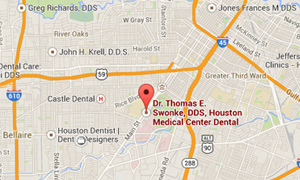In most instances involving tooth decay, the dentist will examine the tooth and prepare a filling. In cases where the decay is severe and the structure of the tooth will not support a filling, the dentists at Houston Medical Center Dental may consider inserting an inlay or an onlay onto the tooth. These restorative procedures function much in the same way as dental crowns, but only cover the affected portion of the tooth.
In cases where the patient’s tooth damage is so extensive that a traditional filling could weaken the tooth’s structural integrity, the dentist may recommend an inlay. Inlays are made from porcelain or composite resins and are built to stand up to the powerful forces the jawbone generates by chewing. These inlays can be shaded to resemble the color of the surrounding teeth.
The patient visits the dentist for two separate inlay appointments. The first visit involves the dentist cleaning and examining the decayed area to determine if an inlay is needed. If so, the dentist takes a bite impression and sends it to the laboratory. Two to four weeks later, the dentist receives the inlay and cements into the affected area.
Similar to an inlay, an onlay consists of porcelain or composite resins. The main difference is that an inlay fills in the portions of the teeth that adjoin the neighboring teeth, while the onlay covers more of the upper cusps of the teeth. A dental crown protects the entire upper surface of the tooth, but an onlay covers only covers the affected portion.
Both inlays and onlays require precision measurements to prevent future decay to the surrounding tissue, so the professionals at Houston Medical Center Dental take precise measurements and check the bite impressions to ensure a perfect fit.
If you have severe tooth decay, you may need an inlay or onlay. Contact Houston Medical Center Dental to make an appointment today!



